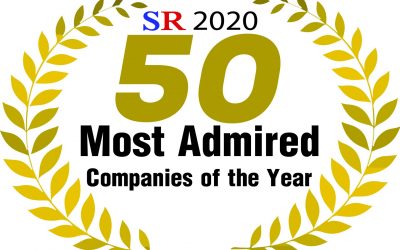The headline “Improve Employee Engagement” is everywhere in the business culture. Understandably so, because employee engagement is linked to less turnover, higher productivity and ultimately, to increased profitability. As a coach, providing your clients with the skills and resources to boost employee engagement will be extremely valuable to them. A key way is through authentic appreciation.
What is Appreciation?
Simply said, appreciation is taking a moment to focus upon individuals to show that you value the work they do. This is one of the keys to improving Employee Engagement. People clearly want to be appreciated for their contributions:
- The level of employees feeling appreciated is one of the core factors Gallup found to significantly impact the degree of employee engagement in organizations
- Over 200,000 global employees were studied by the Boston Consulting Group, and the top reason they reported enjoying their work was “feeling appreciated” (financial compensation didn’t appear until #8)
- Seventy-nine percent of employees who quit their jobs cite lack of appreciation as a key reason for leaving
- Four out of five employees (81 percent) say they are motivated to work harder when their boss shows appreciation for their work
It would appear that the most important ways to increase Employee Engagement is to give employees appreciation. But, unfortunately, most people don’t feel appreciated at work.
In fact, while 51 percent of managers surveyed across several companies felt they were doing a good job of recognizing employees for work well done, only 17 percent of the employees who worked for those managers felt appreciated by their supervisor. Thus, a wide discrepancy existed between how the managers perceived they were doing and what their employees experienced.
So, Why Are We Missing the Mark?
The first core principle to understand is that not everyone feels appreciated in the same ways. Each person has a specific “language” that, when used, communicates a clear message that they are appreciated. Research and experience have identified five languages of appreciation in the workplace:
- Words of Affirmation: Praise communicated orally or in writing
- Quality Time: Receiving focused attention from your supervisor, “hanging out” with co-workers, working together on a project
- Acts of Service: Helping co-workers troubleshoot or complete a time-sensitive project
- Tangible Gifts: Giving a small gift reflecting colleagues’ food preferences, hobbies or interests
- Appropriate Physical Touch: Spontaneous celebration of a positive event such as a high five when a project is completed, a fist bump upon solving a problem, or a congratulatory handshake when a significant sale is made
Core Conditions for Staff to Truly Feel Appreciated
Four core conditions need to be present in order for employees to truly feel appreciated. Business leaders need to focus on communicating appreciation in these ways in order to be effective in their efforts. And, coaches need to assist their clients in implementing these steps to help improve their employee engagement.
Team members will feel valued when appreciation is communicated:
- Regularly: What ”regularly” means varies depending on the work setting, the frequency of interaction between co-workers and the nature of the relationship. However, regularly clearly implies more than once a year during a performance review or when someone receives the “Staff Member of the Month” award
- Through the language and actions important to the recipient: The key word is “recipient.” Most of us tend to communicate appreciation to others through the actions that we value—like giving a verbal compliment or sending an email. But, as mentioned above, not everyone feels appreciated in the same ways, and the probability is high that your colleagues differ from you in what communicates appreciation to them
- In a way that is personal and individualized: Group-based recognition is a good start (“Way to go, team. Our satisfaction ratings improved last quarter”), but if the appreciation doesn’t relate to what the individual team member did to help achieve the goal, the communication can fall flat. Employees want to know what they have done that you value
- In a manner that is perceived as authentic: If the communication of appreciation is not perceived as being genuine, nothing else really matters. Actions of recognition can appear inauthentic when:
- A person’s tone of voice, posture or facial expressions don’t seem to match what they are saying
- How a person relates to you in front of others differs from how they interact with you privately
- There is an overall question of the motivation of the deliverer—do they have an ulterior motive?
With some thoughtfulness and intentionality, creating a culture of appreciation in the workplace is attainable, and an investment that makes good business sense. But many leaders need assistance and a structured process to apply the concepts of communicating authentic appreciation.
About the Author:
Paul White, Ph.D., is a psychologist, author and speaker, who “makes work relationships work.” White is the co-author of three books including, The 5 Languages of Appreciation in the Workplace, which has sold over 330,000 copies (written with Gary Chapman, Ph.D., author of the #1 NY Times best-seller, The 5 Love Languages). Their online assessment tool, Motivating by Appreciation Inventory, has been taken by over 175,000 employees and their Appreciation at Work training resources are used in over 25 countries.
This Blog post is re-blogged from Coach Federation, and the original post can be found here: https://coachfederation.org/blog/authentic-appreciation









